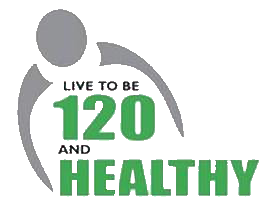We all do our best to eat healthy and steer clear of toxic food additives. Unfortunately, as we’ve grown wiser so have food manufacturers. To save #their products — and their profits — controversial #ingredients are often renamed, causing confusion that leads us to eat ingredients we’d rather avoid.
Tired of getting tricked, we teamed up with Smartypants to uncover the most common #harmful ingredients that #disguise their way into our food. Here are the top 6 offenders and some simple tips to avoid them.
1. MSG (Monosodium glutamate)
A common flavor enhancer in Asian cuisines, canned veggies, soups, salad dressings and processed meats, MSG can cause headaches, weight gain, nausea, chest pain, sweating and more.
Sneaky label disguises: Flavor enhancers, hydrolyzed vegetable protein, textured vegetable protein, yeast extract, glutamate, glutamic acid, gelatin
How to avoid it: It’s safe to assume all processed foods contain MSG, so aim to eat whole, fresh foods whenever possible. Skip flavored seasonings for basics like salt, pepper and fresh herbs. When dining out, ask your server if their food contains MSG. Still, the only way you can be 100% certain is by cooking your own food.
2. High fructose corn syrup (HFCS)
A cheap, popular sweetener, HFCS can be found in everything from sodas, candy and fruit juice to cereal, yogurt and ketchup. Research suggests it can trigger changes in the brain that affect memory and learning and may disrupt the body’s normal metabolic function, increasing your risk for obesity. If that wasn’t bad enough, consuming HFCS may also raise your risk for cancer, dementia and liver damage.
Sneaky label disguises: Fructose, corn syrup
How to avoid it: Trash the junk food. The quickest way to avoid HFCS is to eat less fast food, candy and soda. Stick to fresh and organic foods, and check food labels. You may be shocked to find HFCS hiding in even savory items like meat, pasta sauce, peanut butter and bread.
3. Trans fats
Made by adding hydrogen to liquid oil — which creates a solid substance similar to margarine or Crisco — trans fats boost flavor, improve texture and increase the shelf life of foods. Problem is, they also increase levels of “bad” cholesterol while reducing levels of “good” cholesterol, skyrocketing your risk for heart disease.
Sneaky label disguises: Trans fatty acids, partially hydrogenated oils
How to avoid it: Even if the label or box says “0 g trans fat,” it could still have up to half a gram per serving, so study the ingredient list. If you see “partially hydrogenated oils,” leave it on the shelf.
4. Carrageenan
Sadly, natural doesn’t always mean healthy. Made from parts of red algae and seaweed, carrageenan is used to thicken the consistency of foods to make them taste fuller and richer. It’s been found to cause inflammation, gut irritation and possibly cancer.
Sneaky label disguises: Algas, algue rouge marine, carrageenin, carragenano, chondrus extract, chondrus crispus
How to avoid it: Organic doesn’t mean carrageenan-free, so examine ingredients carefully. It’s most often found in yogurt, cheese, ice cream, soy milk, chocolate, soup and broth products.
5. Artificial sweeteners
Suspected of causing a range of health problems — from cancer to headaches, seizures and mood disturbances — artificial sweeteners are seriously bad news. Even worse, the faux sweeteners can actually intensify your food cravings.
Sneaky label disguises: Aspartame, neotame, saccharin
How to avoid it: Carefully read labels on protein shakes, powders, yogurts and cereals and keep clear of diet soft drinks. Need to sweeten your coffee or tea? Use raw honey or maple syrup instead of fake sugars like NutraSweet and Equal.
6. Sodium nitrate
There’s some evidence that sodium nitrate, a preservative used in processed meat products, can reduce glucose tolerance and damage blood vessels, increasing your risk for diabetes and atherosclerosis. As the meat cooks on your grill or stovetop, a reaction with the preservative can also form carcinogenic compounds called N-nitroso —which has been associated with bowel cancers in some animal studies.
Sneaky label disguises: Sodium nitrite, nitrates
How to avoid it: Designate two or three days a week as meat-free. Nitrates are most commonly found in cured meats like hot dogs, bacon, ham, sausages, salami and some red meats. The World Cancer Research Fund recommends limiting red meat consumption to 500 grams (about the size of your palm) weekly and to eat processed meats as infrequently as possible. If meat is a diet staple, stick to grass-fed and organic
Photo Credit: Shutterstock

SmartyPants offers the first All-in-One Gummy Vitamin for adults and kids that combines eco-friendly omega 3 DHA & EPA + a multivitamin + Vitamin D3 in one serving.
We started this company because it has, quite simply, become too hard to be healthy. We know what it’s like to stand bewildered in front of a wall of vitamins and wonder…”what now?”
That’s why we’re asking the questions for you and combining well-researched nutrients (that are toughest to get safely from our food) into one serving that tastes so good, you won’t have to worry about remembering to take them every day.



